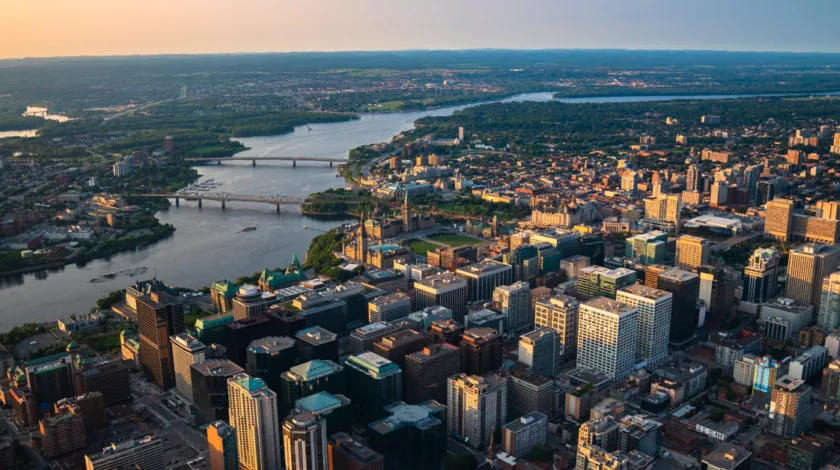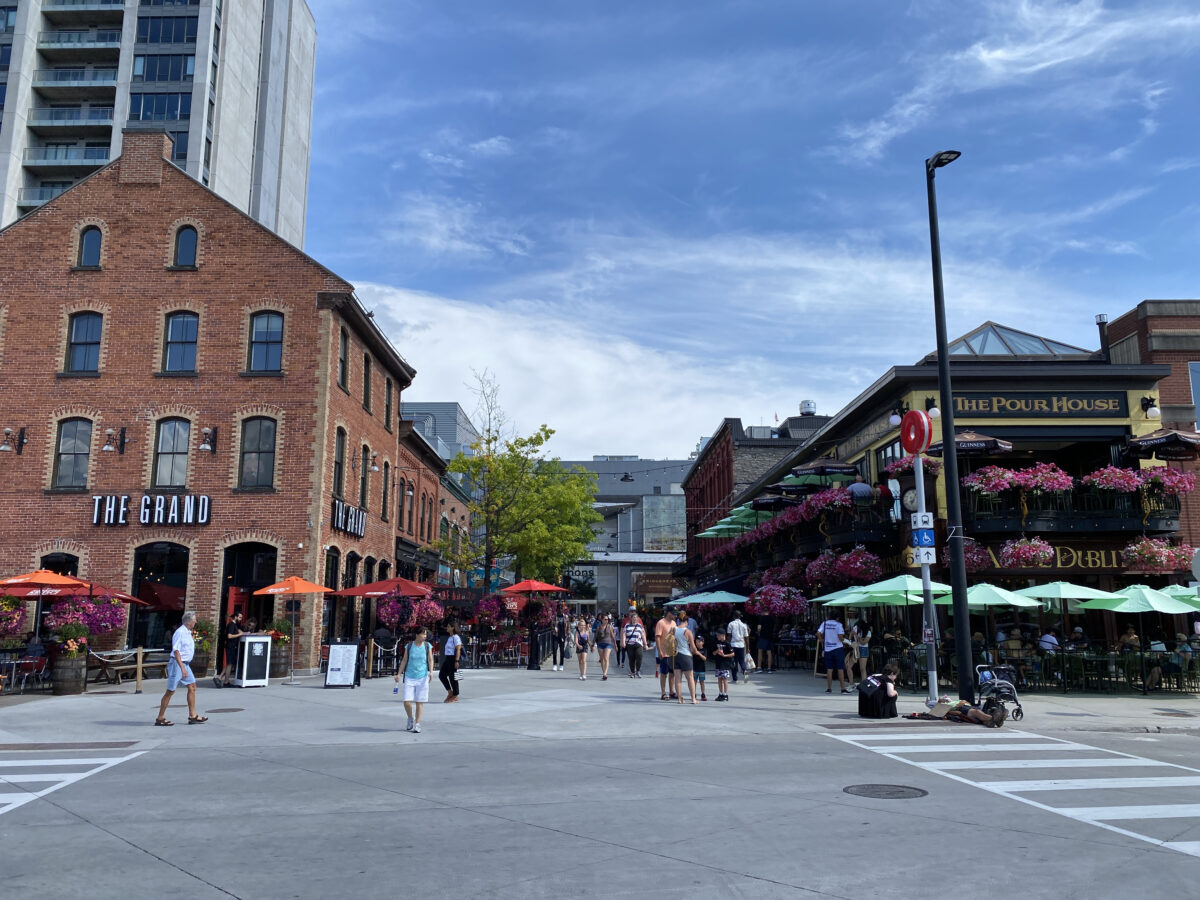Half a Billion Dollar Downtown Ottawa Revitalization Announced to Bring Vibrancy to the Core

Ottawa (Image: Ottawa Tourism)
The Ottawa Board of Trade has collaborated with the Canadian Urban Institute to launch a new initiative to help transform and revitalize the city’s downtown core.
The Downtown Ottawa Action Agenda aims to reimagine and rejuvenate Downtown Ottawa, making it more diverse, resilient, and vibrant for generations and challenges to come.
Under the plan, Downtown Ottawa will see the addition of 40,000 new residents and the creation of 50,000 jobs by 2034, transforming the cityscape into a bustling hub of activity and innovation. The plan proposes creating a joint $500 million fund to kick-start a series of catalytic projects, including significant enhancements to the public realms of Sparks Street and ByWard Market, and the establishment of a new Business Incubation District and an Arts/Culture Corridor.
“This is more than a plan; it’s a renaissance for Ottawa’s downtown,” said Sueling Ching, President & CEO, Ottawa Board of Trade. “By fostering a live-work-play environment, we are not only boosting the local economy but also creating a culturally rich, inclusive, and accessible downtown for all to enjoy. And a Capital City all Canadians can be proud of.”
“Downtown Ottawa’s revitalization is a blueprint for how cities can harness urban space to meet the challenges of the 21st century,” said Mary Rowe, President & CEO, Canadian Urban Institute. “By focusing on inclusivity, resilience, and vibrant public spaces, Ottawa is setting a standard for urban innovation.”
Rowe said downtowns around North America are reinventing themselves and Ottawa is no exception to that.
She said the pandemic exacerbated a number of issues downtowns already had but became more obvious and more critical during the pandemic.
“The Board of Trade came to us and said they wanted to do something. We’ve got to figure out what the future of the downtown is. It’s too important. The commercial tax base. So we started working with them and a whole bunch of partners,” said Rowe.
“Historically, downtowns were places you went for excitement, to see something you didn’t see in your neighbourhood, to have an experience . . . Downtowns were destinations. They were really lively places. Over time they became more dominated by office uses, office workers. And in many ways that sort of changed the composition of downtowns. Suddenly you were going downtown to work. Hasn’t always been the case.”
Today, the office landscape has changed with more remote workers and hybrid workers. This has given downtowns an opportunity to rethink what downtowns should be.
“Downtowns are for people. The main ingredient for any downtown is people. Lots of people. Different kinds of people. People coming into a physical environment for some kind of extraordinary shared experience. And that’s what we’re rediscovering now. We’re rediscovering how do we do that? How do we attract residents to live downtown? How do we attract more visitors to experience downtown and also how do we accommodate workers who may be coming in and out and commuters? These are all part and parcel of the challenge as we reinvent downtowns.
“It’s happening around the country and Ottawa is Canada’s living room. So it’s important that they get it right. The rest of the country is watching.”
Here’s the Top Five Immediate Actions outlined in the Ottawa plan:
- Prioritize Housing: Streamlining processes to increase downtown residency through higher density and use of public land.
- Invest in the Future: Establishing financial mechanisms for ongoing downtown investment.
- Address Homelessness, Addiction, and Mental Health: Implementing focused programs with multi-level government funding.
- Improve Regional Mobility: Enhancing transit options to make downtown more accessible.
- Position Downtown Nationally and Internationally: Marketing efforts to boost economic activity and enhance downtown’s image.
Ching said that as the voice of business the Board of Trade advocates for priorities and policies that create a competitive business environment.
“We are also representing the interests of the business community as it pertains to economic development in our community. So from that perspective, we have been mindful of the impact of the changes in workforce strategy for both the private and the public sector since the beginning of the pandemic because as you know our downtown in Ottawa we’ve been very fortunate with our business district in that a high majority of it is coming from the public sector,” she said.
“During the pandemic at one point we realized that the hybrid workforce strategy was not something that was going to go away and we were all going to go back to normal. So because of that we knew that the footfall in the downtown core was going to change. It was going to change the dynamic of the economy. We know that the downtown is an important part of the economy and also that there are many businesses there that were built up for that market and that it’s also a great asset for tourism.
“We knew that it would have to transform to become more diverse, more resilient, more vibrant and that’s why we declared it last year a top priority.”

Ching said Ottawa is not alone in the issues downtowns face today in Canada and the United States.
“But Ottawa is a poster child, I’ll tell you that. All downtowns of the large cities across Canada, they were disproportionately impacted during the pandemic. But Ottawa has remained the slowest to recover its downtown and therefore its economy among the larger cities,” said Ching.
“And it has everything to do with the fact that we are the seat of government and that the footprint of the public sector in our downtown core is significant and that the return to office, not work, for that sector is significantly impacting our ability to recover.”
Ching said safety in downtown areas is critically important because it directly impacts the ability to attract people to the core.
“During the pandemic what happened was that many of those issues became highlighted if you will. Maybe even accelerated and so we have to ensure the safety and security of the people that we want to work in the city core, live in the city core, and visit the city core but also for the people who are the most vulnerable and come up with a solution to serve those people as well. It’s critically important. It has the ability to discourage people from investing in the core or in the city. It needs to be addressed. And it needs to be addressed in a very multi-faceted, trilateral way for all levels of government.”

The action plan was developed by the Canadian Urban Institute, in partnership with the City of Ottawa, Ottawa Tourism, Invest Ottawa, BOMA Ottawa and the National Capital Commission.
“Our collaborative approach ensures that the transformation of Downtown Ottawa not only meets the economic and cultural needs of today but paves the way for future generations,” said Brendan McGuinty, Board Chair, Ottawa Board of Trade.
“We’re taking a Team Ottawa approach to our downtown. By coming together as a community, we’re not just revitalizing our core, but also setting the stage for a dynamic and resilient future for all Ottawa residents,” said Ottawa Mayor Mark Sutcliffe.
The Ottawa Board of Trade is the voice of business and a key economic partner in the National Capital Region. Its mission is to cultivate a thriving world class business community. One that drives affordable, inclusive, and sustainable city building. It is a champion of Ottawa as the best place to live, work, play, learn, visit and invest. For information, visit here.
The Canadian Urban Institute is a national platform where policy makers, urban professionals, civic and business leaders, community activists and academics can learn, share, and collaborate with one another from coast to coast to coast. Through research, engagement, and storytelling, CUI’s mission is to support vibrant, equitable, livable, and resilient cities in Canada. For information, visit here.
Source: Retail Insider
Author: Mario Toneguzzi

